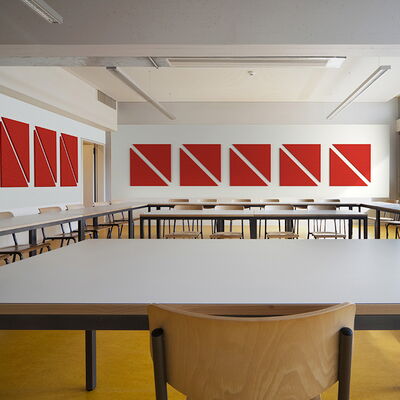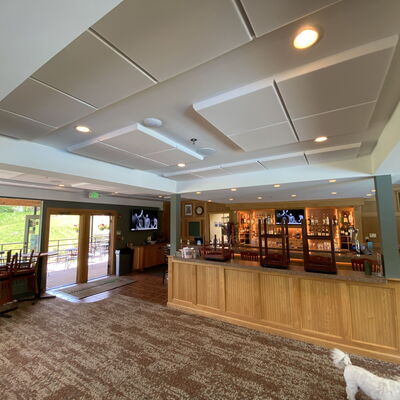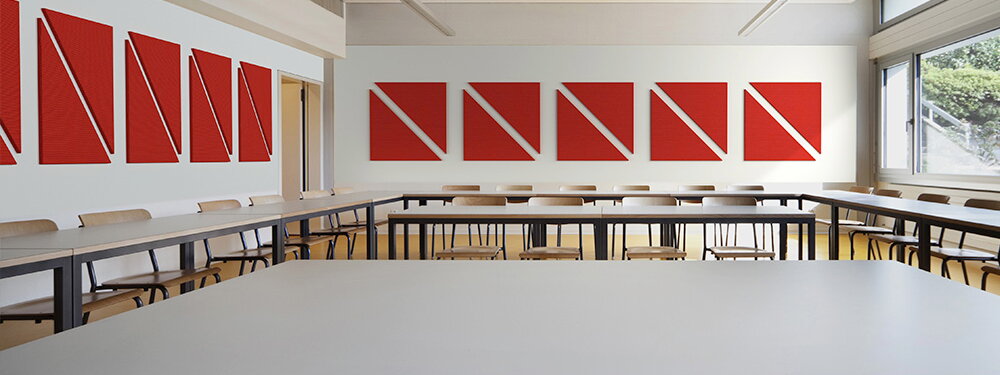- DDS Acoustical Specialties
- Applications
- Architectural
- Education & Child Care
Optimizing Learning Environments for Success and Comfort
Noise control is a critical aspect of creating effective learning environments in schools, colleges, and educational institutions. Excessive noise from students, equipment, hallways, and external sources can disrupt learning, reduce concentration, and negatively impact academic performance. Implementing educational noise control solutions helps minimize these disruptions, ensuring that classrooms, libraries, and study areas provide the quiet, focused atmosphere necessary for learning and development.
Educational noise control solutions include acoustic panels, sound-absorbing ceiling tiles, noise-reducing partitions, and soundproofing materials designed to address the unique challenges of educational settings. These solutions work to absorb and block unwanted noise, reducing reverberation and improving speech intelligibility in classrooms and other learning spaces. By investing in noise control, educational institutions can enhance the quality of their learning environments, support better communication, and create more productive spaces for students and educators alike.
Incorporating noise control measures in educational settings not only improves the learning experience but also contributes to the overall well-being of students and staff. Whether upgrading existing facilities or designing new ones, noise control is a vital component of educational excellence, promoting a more effective and engaging learning atmosphere.
Enhances learning, reduces distractions, supports cognitive development, minimizes stress, and creates adaptable, focused environments for students and educators.
Benefits of Education & Child Care Noise Control
- Stylish and Aesthetic
- Enhanced Learning Environments
- Improved Classroom Behavior
- Boosted Cognitive Development
- Stress Free and Healthier for Staff and Students
- Adaptability for Multi-Purpose Spaces
Most Often Used Products

Fabric Wrapped Acoustic Panels
Great acoustics are essential in all public and private environments. Whether you're designing a quiet office, an inspiring classroom, or an immersive performance space, managing noise and controlling sound reflections is critical.

Acoustic Foam
Acoustic foam offers an affordable, flexible, and effective solution for managing echo, reverberation, and excess noise.

Stretch Fabric Systems
Stretch fabric wall and ceiling systems offer a flexible, high-performance acoustic solution for spaces where design precision and visual impact are key.

Art Printed Panels
Bring gallery quality artwork to your space’s acoustic design. Acoustic Wall Art Panels can be customized for your brand, business, and overall aesthetic and offer an eye-catching way to solve reverberation issues in a space.
Frequently Asked Questions
A:
Noise control is crucial because excessive noise can hinder concentration, disrupt communication, and negatively impact learning outcomes and child development. A quieter environment fosters better engagement and focus for students and staff alike.
A:
Poor acoustics make it harder for students to hear and understand instructions, leading to decreased comprehension and participation. This is particularly problematic for younger children and students with hearing impairments or language challenges.
A:
Common noise sources include chatter, foot traffic, HVAC systems, external traffic, and playground activities. These sounds can echo and amplify in spaces with hard surfaces and minimal acoustic treatment.
A:
Acoustic panels, sound-absorbing ceiling tiles, noise-reducing flooring, and classroom design strategies such as noise barriers or partitions can effectively control noise and improve classroom acoustics.
A:
Lower noise levels reduce stress and vocal strain for teachers, improving their communication with students and overall job satisfaction. Quieter environments also make classrooms more manageable.
A:
Yes, acoustic treatments are particularly beneficial for students with auditory processing disorders, autism, or sensory sensitivities by creating a less overwhelming and more focused learning environment.
A:
Reduced noise levels help young children concentrate on language acquisition, social interaction, and cognitive development, laying a strong foundation for future learning.
A:
Absolutely. Acoustic solutions can be tailored to fit classrooms, libraries, gyms, auditoriums, and child care areas while blending with the facility’s aesthetics and functional needs.
A:
Investing in noise control improves academic performance, supports staff retention, enhances the overall school environment, and demonstrates a commitment to quality education.
A:
Yes, acoustic treatments ensure that spaces like cafeterias, libraries, and auditoriums are adaptable for various activities, optimizing sound for both quiet study and dynamic group events.

